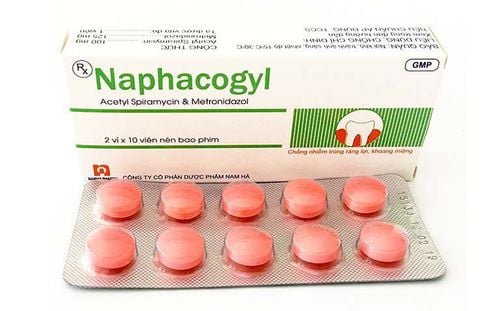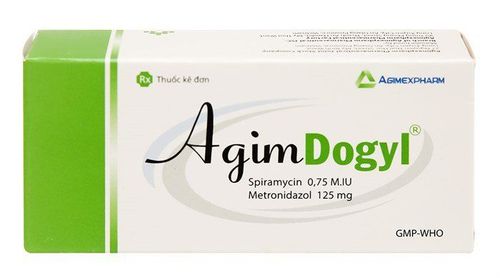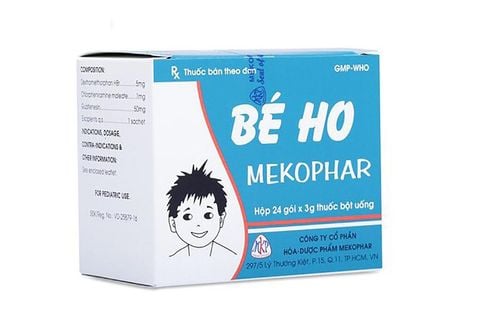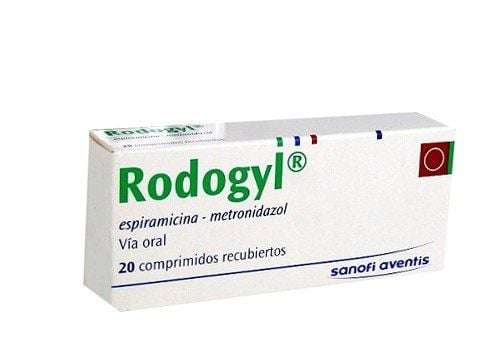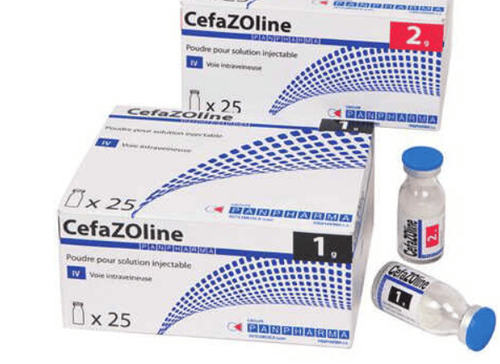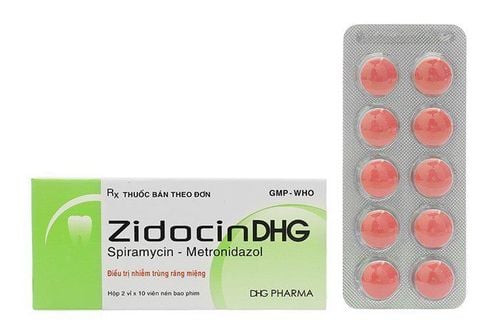This is an automatically translated article.
Nexix drug is made in the form of film-coated tablets with the composition of Spiramycin and Metronidazol. Medicines are used to treat oral infections.
1. Uses of Nexix
Each Nexix tablet contains: Spiramycin 750,000 IU and Metronidazol 125mg. On the market, there is a whole line of Nexix Plus drugs with ingredients including: Spiramycin 1,500,000 IU and Metronidazol 250mg. This article mainly deals with the drug Nexix.
Nexix drug is a combination of Spiramycin and Metronidazol, effective against anaerobic bacteria, effective in the treatment of oral infections. Specifically, Spiramycin is a macrolide antibiotic, which acts on the 50S subunit of bacterial ribosomes, blocks protein synthesis, and inhibits bacterial cell growth. Metronidazole is a derivative of the 5-nitroimidazole group, which is active against anaerobic bacteria and protozoa.
Indications for the use of Nexix: Treatment of acute, chronic and recurrent oral infections, especially tooth abscesses, peri-jawbone cellulitis, inflammation, periodontitis, stomatitis , gingivitis , periodontitis , submandibular inflammation , parotid gland inflammation .
Contraindications to the use of Nexix:
Patients with a history of hypersensitivity to the drug's components, including other macrolides and imidazoles; Pregnant women in the first 3 months of pregnancy and mothers who are breastfeeding.
2. How to use and dose Nexix
Patients take Nexix tablets whole with a little water. Because food reduces the bioavailability of Nexix, patients should take the drug away from meals.
Dosage of the drug will be prescribed by the doctor according to the medical condition as well as the age. Specifically:
Adults: Take a dose of 2 tablets/time x 2-3 times/day; Children from 10 to 15 years old: Take 1 tablet/time x 3 times/day; Children under 10 years old: Dosage form and drug content are not suitable for this target group. When using Nexix drug overdose, patients have symptoms of nausea, vomiting, ataxia, convulsions and peripheral neuritis. At this time, the patient is receiving symptomatic and supportive treatment because there is currently no specific antidote.
3. Nexix side effects
When using Nexix, patients may experience side effects related to drug ingredients. Specifically:
Spiramycin: Common side effects include nausea, vomiting, diarrhea and indigestion. Occasionally, patients experience fatigue, sweating, skin rash, epistaxis, acute colitis, urticaria, and exanthema. Patients may have anaphylactic reactions, superinfection due to daily use of Spiramycin (rare); Metronidazole: Side effects are mainly dose dependent. Common side effects include gastrointestinal upset (especially nausea and an unpleasant metallic taste in the mouth). Sometimes, the patient has vomiting, epigastric pain, diarrhea, abdominal pain, constipation, ... In addition, the patient may have agranulocytosis, headache, seizures, skin rash, urine dark (rarely). The drug should be discontinued if the patient experiences confusion, dizziness, or ataxia. When experiencing side effects of Nexix, patients should immediately notify the treating doctor to receive appropriate advice.
4. Be careful when using Nexix
Some notes patients need to remember before and while using Nexix:
Be careful when using Nexix in patients with liver dysfunction; Metronidazol component in Nexix drug inhibits alcohol dehydrogenase and other alcohol oxidizing enzymes, leading to mild disulfiram-type reactions such as headache, nausea, vomiting, hot flushes, sweating, abdominal cramps; Use caution when using Nexix for patients with suspected gastric ulcer, ileitis, chronic colitis; The drug is prepared in the form of slow-release film-coated tablets, so it can be toxic to the elderly, slow bowel movements; Do not take medicine while lying down; Nexix crosses the placenta. There are some studies that show a risk of teratogenicity if Nexix is taken during the first 3 months of pregnancy. Therefore, it is best for pregnant women not to take the drug, if it has to be approved by a doctor; Nexix diffuses into breast milk. Therefore, if the mother takes this drug, she should stop breastfeeding.
5. Nexix drug interactions
Some of the drug interactions of Nexix include:
Spiramycin may reduce the effectiveness of oral contraceptives. Therefore, the patient should be informed by the doctor and choose a more suitable contraceptive method; Metronidazole enhances the effects of warfarin and phenytoin by inhibiting the metabolism of these drugs by the enzyme CYP2C9; Metronidazole inhibits the drug-metabolizing enzyme CYP3A4 mainly in the intestine, resulting in increased concentrations of drugs such as cyclosporin, tacrolimus and quinidine if used concomitantly; Simultaneous use of Metronidazol and disulfiram will cause neurotoxicity with psychosis, confusion; Simultaneous use of Metronidazol with alcohol causes antabuse effect with hot, red skin, tachycardia, vomiting; Concomitant use of Metronidazole with phenobarbital will increase metabolism and increase elimination of Metronidazole component; Metronidazole increases the concentration of lithium in the blood, causing toxicity; Metronidazole enhances the effect of the muscle relaxant vecuronium if used concurrently. During the use of Nexix, patients should absolutely follow the instructions of the specialist. At the same time, patients need to inform the doctor about their medical history and the medications they are taking so that they can be advised to adjust accordingly.
Please dial HOTLINE for more information or register for an appointment HERE. Download MyVinmec app to make appointments faster and to manage your bookings easily.




